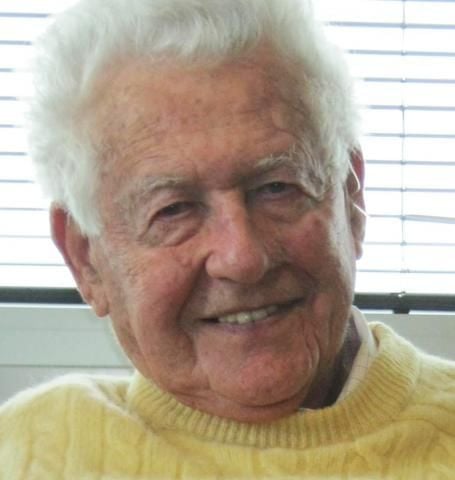
Deep into his 80’s, Dr. Burton Waisbren Sr. not only still maintains an active practice at his Milwaukee clinic treating people with “problem diseases,” he also writes about it. In his new book, Treatment of Chronic Lyme Disease (iUniverse, $24.95), Waisbren chronicles 51 cases, many of them seriously ill people he treated with success after other doctors turned them away for lack of “scientific evidence” that they were sick.
Waisbren said he wrote the book because he thinks Lyme has become a national epidemic that warrants more attention than it is currently getting from the government and academic medical establishment. The book is filled with technical information intended to start a dialog among medical professionals, and at the same time it details personal battles with Lyme of interest to everyone.
Reported incidences of Lyme, a tick-borne bacterial infection, have increased more than five-fold in Wisconsin since 2000, according to figures released last spring by the Centers for Disease Control (CDC), making it the third hardest-hit state in the country. Lyme disease has increased so markedly in Wisconsin that this summer the Department of Health Services narrowed its criteria for reporting it. It’s a cost-cutting measure expected to “eliminate” up to 30 per cent of the cases, according to state epidemiologist Diep Hoang Johnson.
It’s the unreported cases that have long concerned Waisbren, a specialist in infectious disease and immunology. A native Milwaukeean, he was director of the infectious disease division of Marquette Medical School and the Medical College of Wisconsin for 18 years, and medical director of the St. Mary’s Hospital Burn Center for 20 years.
Beginning in 1989, patients started coming to him who complained of symptoms associated with Lyme disease, but who had not been able to get treatment for it elsewhere. Some of them were dismissed because of negative blood tests.
“There’s no (good) test for it,” he says. “Diagnosis has to be based on exposure to ticks and on symptoms.”
Some of his patients were ignored by doctors who did not believe Lyme disease existed in their part of the state or country, even patients who displayed the characteristic bulls-eye-like Lyme rash.
Many of Waisbren’s patients came to him after undergoing work-ups at leading hospitals only to be told that their symptoms were somatic. Others were mistakenly diagnosed with multiple sclerosis because of certain neurological symptoms.
Nearly all the patients in the book described themselves as being healthy, fit and physically active until shortly after a nature hike, picnic, or other foray into tick-infested areas. Almost overnight they began to suffer from a variety of debilitating symptoms including excessive fatigue, joint and muscle pains and aches, “brain fog,” skin rashes, neurological and gastrointestinal dysfunction.
In both teaching and treating, Waisbren says he has always practiced what he calls “investigative internal medicine,” a process of searching for solutions to difficult cases. This path, he says, has allowed him to make inroads and discoveries.
For instance, Waisbren says he observed that a significant number of patients who came to him with multiple sclerosis symptoms responded well to antibiotics, whether or not it was known that Lyme was the underlying cause. It led him to conclude that “early MS should be treated for Lyme if the patient lives in Lyme country.”
Lyme, like MS, is an autoimmune disease. It is one of many debilitating diseases—such as Parkinson’s disease, chronic fatigue, early Alzheimer’s, ALS, and fibromyalgia—for which Lyme is frequently mistaken.
Waisbren is a founding member of the Infectious Disease Society of America, (IDSA), but disagrees with that group’s position that Lyme bacteria are eradicated after a short course of antibiotics. “If symptoms persist after a few weeks of treatment, they say it’s a somatic syndrome.
“It would be hard for me to conclude that the fifty-one cases in my book are a figment of my imagination,” quips Waisbren, whose book documents numerous successes treating chronic Lyme with long-term antibiotic therapies.
With appropriate monitoring, long-term antibiotic use does not pose undue risk, according to Waisbren. “Back in the 1950’s, when many of these drugs were first coming out, infectious disease doctors studied and used them widely,” he says. “We would put children with rheumatic fever on penicillin for twenty years or more to prevent strep throat and it (the penicillin) did not hurt them,” he says.
Waisbren and other practitioners who treat Lyme outside of IDSA guidelines note that the Lyme bacterium, (like it’s cousin that causes syphilis) is a spirochete, capable of penetrating the tissues, where it is difficult for the immune system to fight it. Further complicating treatment, he says, is that fact that more than one microorganism is usually involved.
Most doctors and insurance companies adhere to IDSA guidelines for dealing with Lyme. Waisbren details the dilemma of more than one patient who could not afford to continue treatment after an insurance company declined coverage. However, many of the patients chronicled in the book were able to remain in treatment long enough to show marked improvement or complete recovery.
Waisbren has published numerous articles in peer-reviewed medical journals and has written other books dealing with methods of critical care and medical emergencies. The new book is available for purchase at www.waisbrenclinic.com, a site which also offers links to Waisbren’s many other observations through the years as an “investigative” physician.
